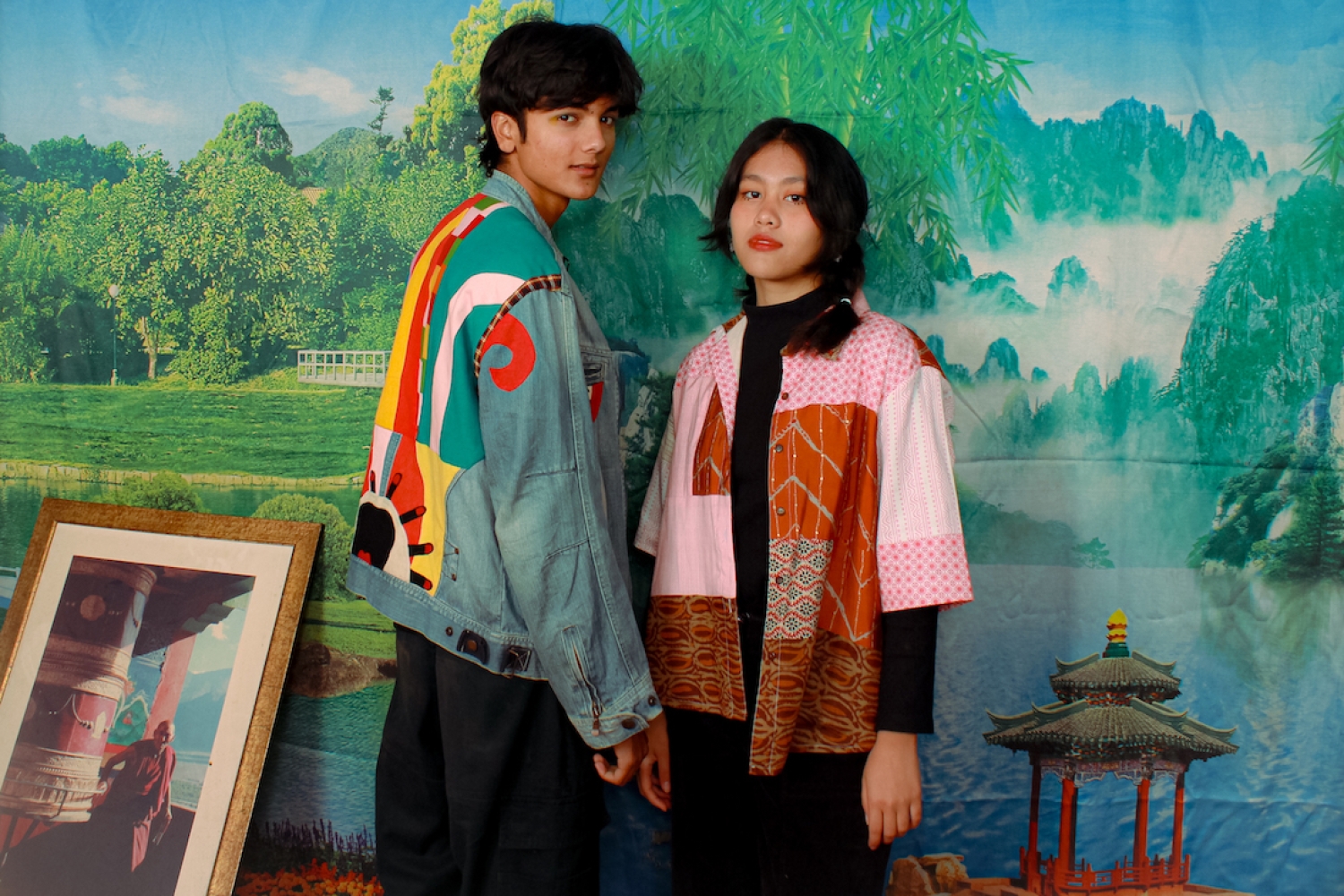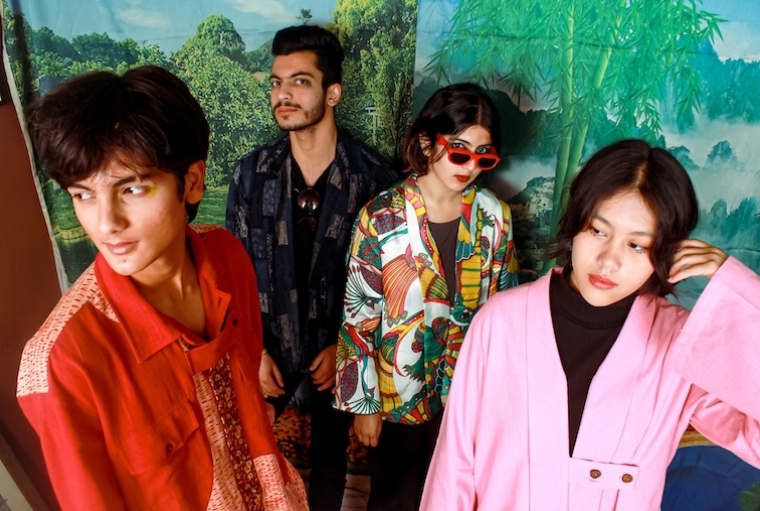

Named after Meethi and Mirchi, founders Mahima and Himanishi’s puppies, Mee.mi is a design practice that champions the development of reclaimed materials into utilitarian pieces. Driven by their curiosity around the idea of textile waste and the pertinent questions that surround the fashion industry and its malpractices, Mahima and Himanshi’s Mee.mi develops unusual methods for working, sculpting and engineering discarded textile materials into wearable items. Each piece is commissioned, limited or one-of-a-kind and made locally by hand with meticulous care and quality. Their initial thoughts surrounding the practice were simple as they knew they had to begin at the easiest of places — their next door tailor. The tailors had massive amounts of waste fabric waiting to be burnt or disposed of. As the reality behind the glitz and glamour of the industry stands exposed, the concern for the future is real. While it may take some time for polyester and its poly-cousins to be completely banned from the textile industry, Mahima and Himanshi’s plan of action involves keeping them away from the landfills and in use.
We’re in conversation with Mahima Bargali and Himanshi who let us in on their journey, process and more.
What led you towards design and the label?
After multiple college projects, one job, and zero satisfaction with the fashion industry together, me (Himanshi) and Mahima knew it was time for some experimentation. As a designer, I previously thought design ideas should be primarily influenced by visual cues in order to be legitimate, and I think that was drummed in during design school. I’ve recently let go of that because it never felt right when I tried to force it. I can accept that it’s not laziness, it’s just my way. And I’m glad I can finally articulate it. The muse mostly is nature and the way it works. In terms of work, sometimes it takes the shape of a garment, sometimes it's a system for circularity that fires up hope, sometimes it's a cleanse to make way for something later. We both own another brand, WhakatÅ, that creates garments from alternative plant textiles. But then the thought of creating something new (however consciously) is a very small speck of dust in the sustainability universe. So we also wanted to do something that took care of what already exists. Hence, Mee.mi.

Take us through your creative process.
We go visit the local tailors in and around Dharamshala, Himachal Pradesh. These tailors usually have stacks of leftover fabrics that we buy out at minimal prices. This monetary motivation helps avoid the burning and discarding of these fabrics. Later we segregate these fabrics on the basis of size, material, weight, and colours. The bigger pieces are used for panelling, crocheting, embroidering, the medium ones go for patching, and the smaller ones go into quilting, filling toys, making accessories. Since each fabric is limited in quantity and unique in its leftover shape, our designs are mostly one-of-a-kind.
What should the fashion of now look like?
I feel there is a general theme for the coming year(s) — embracing your own style. The trends are all fun to participate in, sure, but only if you can make them your own. I think people are getting more comfortable with pushing the boundaries and fashion is only getting more creative in terms of self-expression. Our notion of authenticity in the digital world is changing too. It's less about curation and more about connection.
Finally, what's keeping you busy at the moment?
Mee.mi's humongous plushies, and a few upcoming exhibitions.
Words Unnati Saini
Date 22-02-2023